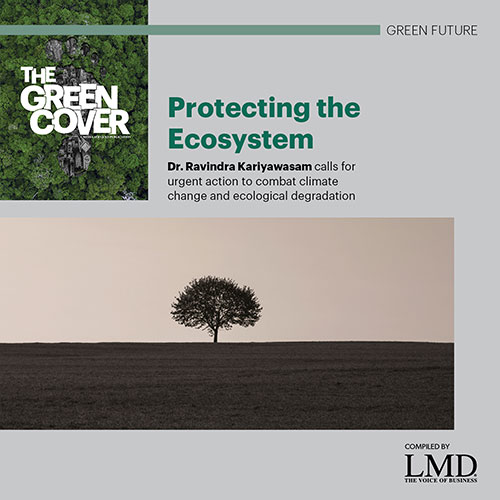A Regenerative Approach
Chalana Perera sheds light on the importance of shifting focus from sustainability to regeneration
Q: What is regenerative tourism in a nutshell?
A: Regenerative tourism is a living systems approach that restores and replenishes resources. Tourism businesses can use ecological principles and practices to regenerate natural systems such as soil, water and biodiversity, as well as human systems like economies and societies.
Moreover, regenerative tourism is not a type of tourism like adventure or wellness tourism may be but rather a systemic approach that aligns the wellbeing of all stakeholders across the value chain. It’s not merely about ecotourism as regenerative tourism can be applied across price points, product segments and destinations.

Founder
RETRACE Hospitality
Q: Why is this approach to tourism important – and why now?
A: Today’s world faces major resource crises compounded by climate change. As businesses face pressure to become more planet conscious, CSR and ESG (environmental, social and governance) criteria are insufficient to enable widespread course correction.
And as a systemic approach that enables tourism to deliver perpetual improvements in ecosystems, communities, businesses and individuals, a transition to being more regenerative is the need of the hour globally.
In this light, Sri Lanka is well-positioned to harness and regenerate its natural, social and human capital. The country’s hospitality sector must recognise the direct correlation between regenerative practices and a healthy bottom line.
Q: How should Sri Lanka’s hospitality sector evolve from focussing on sustainability to regeneration?
A: Sri Lanka’s hospitality investors and operators should begin by understanding the principles of regeneration and thereafter, identify where to apply regenerative practices in their value chains.
Regenerative tourism is a catalyst for systemic change and more equitable wealth distribution. While sustainable tourism reduces negative impacts and avoids depleting resources, regeneration goes a step beyond by increasing positive impacts and replenishing resources, actively reversing damage that has already been done.
The low hanging fruits for local hospitality businesses include integrating regenerative supply chains and staffing models, and product and experience design and delivery. More complex areas such as regenerative construction, digital distribution, capex investments and financing can be addressed once core operations become regenerative.
Q: Where is Sri Lanka on the spectrum of regeneration as a destination? Is our hospitality sector where it should be?
A: We attract who we are. Can a country effectively cater to tourists if it fails to cater to its own population?
Years of damage, loss and trauma to its people, economy and ecosystems make Sri Lanka ripe for regeneration. Regeneration creates a culture of abundance and improvement. Sri Lanka presently faces a critical juncture in this regard – a lot is yet to be done to ensure we reap the many benefits of this opportunity to regenerate resources.
At the grassroots level, rural communities – for example, farmers – embraced regenerative lifestyles for centuries until large-scale plantations and chemical inputs were introduced.
However, regeneration is relatively new to Sri Lanka’s mainstream business and political classes. Greater advocacy for the benefits of regenerative operations is needed among stakeholders to see a more widespread adoption of such practices in tourism.
A handful of Sri Lankan tourism businesses have already embraced this opportunity. Some employed regenerative practices well before the term ‘regenerative tourism’ was recognised – particularly in rural areas.
But to become a truly regenerative destination, more unified action is needed from all investors including grassroots entrepreneurs, international brands, local hoteliers, legacy family offices, foreign investors and diversified conglomerates.
Sri Lanka has all the ingredients to become a regenerative island if stakeholders are aligned.
Q: What challenges do you foresee in Sri Lanka’s journey from legacy tourism to a more regenerative approach?
A: Sri Lanka’s biggest challenge remains the mindset of the decision-making classes and legacy investment community. If more Sri Lankans recognise the inherent opportunity and value in regenerating their businesses, the ‘regenerative bug’ will spread, enabling businesses, communities and ecosystems in the country to flourish in the long term.
A legacy of resilience suggests that Sri Lanka is prone to and accepting of crises when instead, we should be anticipating and preventing them by regenerating ourselves and our resources to be able to thrive as a world-class regenerative tourism destination.
“Greater advocacy for the benefits of regenerative operations is needed among stakeholders to see a more widespread adoption of such practices in tourism







